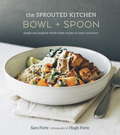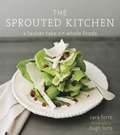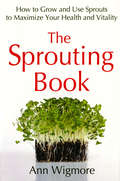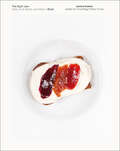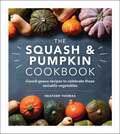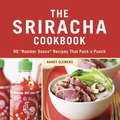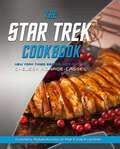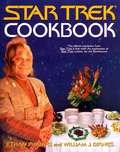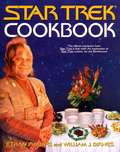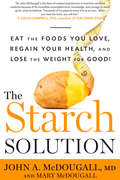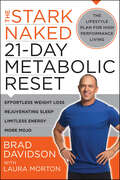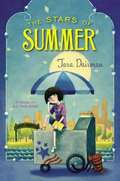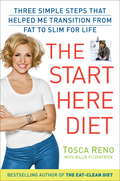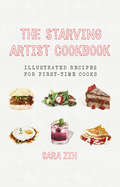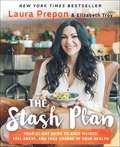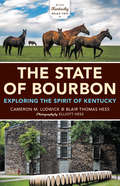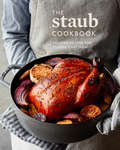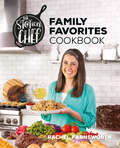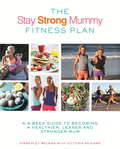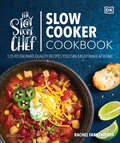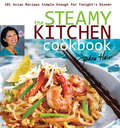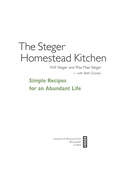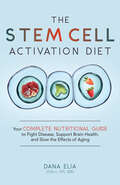- Table View
- List View
The Sprouted Kitchen Bowl and Spoon
by Hugh Forte Sara ForteIn this follow-up to her successful first book, The Sprouted Kitchen, blogger and author Sara Forte turns her attention to bowl food, which combines vegetables, whole grains, and lean proteins in one vessel to make a simple, complete, and nutritious meal. The bowl is a perfect vessel in which to create simple, delicious, and healthy meals. When gathered together in a single dish, lean proteins, greens, vegetables, and whole grains nestle against each other in a unique marriage of flavor and texture. This is how Sara Forte, beloved food blogger and author of the James Beard Award-nominated book The Sprouted Kitchen, cooks every day--creating sumptuous recipes colorful enough to serve guests, simple enough to eat with a spoon while sitting on the couch, and in amounts plentiful enough to have easy leftovers for lunch the next day. In this visually stunning collection that reflects a new and healthier approach to quick and easy cooking, Sara offers delicious, produce-forward recipes for every meal, such as Golden Quinoa and Butternut Breakfast Bowl; Spring Noodles with Artichokes, Pecorino, and Charred Lemons; Turkey Meatballs in Tomato Sauce; and Cocoa Nib Pavlovas with Mixed Berries.From the Hardcover edition.
The Sprouted Kitchen: A Tastier Take on Whole Foods [A Cookbook]
by Hugh Forte Sara ForteSprouted Kitchen food blogger Sara Forte showcases 100 tempting recipes that take advantage of fresh produce, whole grains, lean proteins, and natural sweeteners--with vivid flavors and seasonal simplicity at the forefront. Sara Forte is a food-loving, wellness-craving veggie enthusiast who relishes sharing a wholesome meal with friends and family. The Sprouted Kitchen features 100 of her most mouthwatering recipes. Richly illustrated by her photographer husband, Hugh Forte, this bright, vivid book celebrates the simple beauty of seasonal foods with original recipes--plus a few favorites from her popular Sprouted Kitchen food blog tossed in for good measure. The collection features tasty snacks on the go like Granola Protein Bars, gluten-free brunch options like Cornmeal Cakes with Cherry Compote, dinner party dishes like Seared Scallops on Black Quinoa with Pomegranate Gastrique, "meaty" vegetarian meals like Beer Bean- and Cotija-Stuffed Poblanos, and sweet treats like Cocoa Hazelnut Cupcakes. From breakfast to dinner, snack time to happy hour, The Sprouted Kitchen will help you sneak a bit of delicious indulgence in among the vegetables.
The Sprouting Book: How to Grow and Use Sprouts to Maximize Your Health and Vitality
by Ann WigmoreWritten for everyone who is interested in good nutrition at a low cost and with great taste, this highly practical and fully illustrated book provides readers with all the information necessary to start and maintain an indoor sprout garden. The book discusses a wide variety of sprouts and sprouting methods, explains the sprouts importance in a healthy diet and presents a wealth of simple and delicious recipes.
The Sqirl Jam (Jelly, Fruit Butter, and Others) Book
by Jessica KoslowA home cook–friendly recipe collection of over seventy-five famed jams, jellies, butters, marmalades, and other fruit preserves, from a James Beard–nominated chef.“This is food whose time has come,” declared Mark Bittman about Sqirl, the much-beloved Los Angeles restaurant that locals, tourists, and critics alike all flock to. Sqirl all began with jam—organic, local, made from unusual combinations of fruits, fragrant, and not overly sweet—the kind of jam you eat with a spoon. The Sqirl Jam Book collects Jessica Koslow’s signature recipes into a cookbook that looks and feels like no other preserving book out there, inspiring makers to try their own hands at canning and creating. With photography and a design bound to inspire imitators, The Sqirl Jam Book will make you fall in love with jam.
The Squash and Pumpkin Cookbook: Gourd-geous recipes to celebrate these versatile vegetables
by Heather ThomasWholesome and healthy recipes that are totally #squashgoals!Squashes and pumpkins are the versatile vegetables that not only pack a flavour punch, but are also oh so good for you. Not only are they low calorie, but they're also jam packed full of vitamins A, C and E and a jackpot of minerals, from iron and zinc to magnesium and potassium. These super ingredients are so versatile that you can bake, roast, fry, grill, barbecue and stuff them. From spicy chutneys and hearty soups and curries, to light refreshing salads and delightful bakes, this cookbook will carry you through the colder months with nutritious, homely and comforting recipes to suit every taste.
The Sriracha Cookbook: 50 "Rooster Sauce" Recipes that Pack a Punch
by Randy ClemensYou've drizzled the addictively spicy chili sauce over your breakfast eggs, noodles, and French fries, but now it's time to take your Sriracha obsession to bold, new heights. Food writer and trained chef Randy Clemens presents 50 palate-expanding recipes that make the most of Sriracha's savory punch, such as: Spicy Ceviche, Honey-Sriracha Glazed Buffalo Wings, Bacon-Sriracha Cornbread, the Ultimate Sriracha Burger, Peach-Sriracha Sorbet,and more. Named Bon Appetit's Ingredient of the Year for 2010, the piquant puree of chili peppers is one of the few kitchen standbys adored by adventurous cooks of all stripes--from star chefs to college freshmen--who appreciate its vibrant, versatile balance of ketchup-like sweetness, garlicky pungency, and just the right amount of spice. Whether you're a die-hard fan or a recent convert to the revered 'rooster sauce,' you'll love adding heat, depth, and an intriguing Southeast Asian twist to your dishes beyond just a tableside squeeze.
The Star Trek Cookbook
by Chelsea Monroe-CasselLearn how to make meals that are out of this world with this indispensable guide to the food of the stars! Perfect for every fan, this updated edition of The Star Trek Cookbook from the New York Times bestselling author comes with brand-new and delicious recipes, tantalizing visuals, and easy-to-follow instructions and advice to make the best foods from the future. With all-new recipes right beside timeless classics, food stylist and New York Times bestselling author Chelsea Monroe-Cassel&’s reimagining of The Star Trek Cookbook presents a visual feast along with complete guides on favorite foods from across Star Trek, adapted for easy use in 21st-century kitchens. Themed as a Starfleet-sponsored collection of recipes from across multiple quadrants and cultures, and intended to foster better understanding of different species from a human perspective with its Earth-centric ingredients, this must-have cookbook embraces the best of Star Trek and its core message of hope, acceptance, and exploration in the spirit of gastrodiplomacy.
The Star Trek Cookbook
by William J. Birnes Ethan PhillipsIs there one food that humans, Klingons, Bajorans, and Vulcans would like? If so, what would it taste like? How would you prepare it? Could you find all the ingredients locally?This is the task that faces Neelix, chef for the U.S.S. Voyager , every time he takes on the challenge of trying to feed its crew of 140 food critics. But over the course of their journey, Neelix's learned a few tricks of the trade. He had to, just as a matter of self-preservation.Ethan Phillips, in the persona of Neelix, and William J. Birnes, the New York Times bestselling coauthor of The Day After Roswell, throw wide the vaults of interstellar haute cuisine, revealing for the first time the secret preparation techniques behind all those exotic dishes and drinks. The favorite foods of characters from every Star Trek series and movie are here, all adapted for easy use in twentieth-century kitchens. The Star Trek Cookbook also features a complete guide for whipping up the all the drinks served at Quark's.Fun, and easy to use, the Star Trek Cookbook is your indispensable guide to the food of the stars!
The Star Trek Cookbook (Star Trek)
by Ethan Phillips W J BirnesNeelix, chef to the 140 crew of the USS Voyager, doesn't have an easy task. He's had to learn to satisfy the appetites of a dozen different alien races, in the course of which he's amassed a vast collection of recipes and tricks of interstellar haute cuisine. Now he reveals for the first time the secret preparation techniques behind all those exotic dishes - not to mention those intergalactic drinks . . . THE STAR TREK COOKBOOK includes dozens of easy and fun-filled recipes from Klingons, Vulcans, Ferengi, Cardassians - and, of course, spacefaring humans. All the favourite dishes of characters from every Star Trek series and movie are here, all adapted to make use of available Earth ingredients and suitable for preparation in twentieth-century kitchens. PLUS there's a complete guide to all the delicious concoctions that Quark serves in his bar!
The Starch Solution: Eat the Foods You Love, Regain Your Health, and Lose the Weight for Good!
by John McDougall Mary McDougallA bestselling author's groundbreaking eating plan that challenges the notion that starch is unhealthy From Atkins to Dukan, the fear-mongering about carbs over the past few decades has reached a fever pitch; the mere mention of a starch-heavy food is enough to trigger a cavalcade of shame and longing. In The Starch Solution, bestselling diet doctor and board-certified internist John A. McDougall, MD, and his kitchen-savvy wife, Mary, turn the notion that starch is bad for you on its head. The Starch Solution is based on a simple swap: fueling your body primarily with carbohydrates rather than proteins and fats. This will help you lose weight and prevent a variety of ills. Fad diets come and go, but Dr. McDougall has been a proponent of the plant-based diet for decades, and his medical credibility is unassailable. He is one of the mainstay experts cited in the bestselling and now seminal China Study—called the "Grand Prix of epidemiology" by the New York Times. But what The China Study lacks is a plan. Dr. McDougall grounds The Starch Solution in rigorous scientific fact and research, giving readers easy tools to implement these changes into their lifestyle with a 7-Day Quick Start Plan and 100 delicious recipes. This book includes testimonials from among the hundreds Dr. McDougall has received, including people who have lost more than 125 pounds in mere months as well as patients who have conquered lifethreatening illnesses such as diabetes and cardiac ailments.
The Stark Naked 21-Day Metabolic Reset: Effortless Weight Loss, Rejuvenating Sleep, Limitless Energy, More Mojo
by Laura Morton Brad DavidsonA groundbreaking lifestyle plan to help you attain lasting peak levels of health and fitness by resetting and optimizing your metabolism—resulting in a lean, strong body, more energy, mental sharpness, better sleep, a heightened sex drive, and increased resiliency to stress.Are you totally over feeling tired, sick, and under-sexed? Wondering why you aren’t seeing results even though you’re eating all the right foods and hitting the gym?Forget everything you think you know.You won’t lose weight or improve your health cutting calories and carbs or relying on longer and harder workouts. Those old school approaches are actually detrimental to your health. You’ve got to reset and optimize your metabolism.In The Stark Naked 21-Day Metabolic Reset, fitness expert and co-founder of Stark fitness Brad Davidson shares his exclusive two-tiered program to help you feel great and perform at consistent peak level—with boundless energy that lasts.Davidson begins by showing you how to repair your metabolism by reducing common stressors and removing food sensitivities and toxins that cause inflammation, weight gain and burn out. He then teaches you how to optimize your metabolism by safely reintroducing the right foods for you and learning how to carb cycle, a method of eating carbohydrates that enhances performance without health risks. Designed to withstand the hectic demands of modern life, The Stark Naked 21-Day Metabolic Reset includes step-by-step meal plans and easy to follow recipes, without using any expensive, hard to find foods or complicated calculations. This is THE ultimate program for the high achiever on the go.Get the results you’ve always wanted but never thought possible—The Stark Naked 21-Day Metabolic Reset is the lifestyle plan to help you take control of your health and fitness forever.
The Stars of Summer
by Tara Dairman"A scrumptious gem of a story!"--Jennifer A. Nielsen, New York Times bestselling author of The False Prince for All Four StarsIn this charming sequel to All Four Stars, eleven-year-old foodie Gladys Gatsby now has her first published review under her belt and is looking forward to a quiet summer of cooking and reviewing. But her plans quickly go awry when her friend Charissa Bentley delivers Gladys's birthday gift: a free summer at Camp Bentley. As Gladys feared, camp life is not easy: she struggles to pass her swim test and can't keep the other campers happy while planning lunches. The worst part is she can't seem to get away from the annoying new "celebrity" camper and sneak away for her latest assignment--finding the best hot dog in New York City. But when it turns out her hot dog assignment was a dirty trick by a jealous reviewer, Gladys's reviewing career may be over forever.
The Start Here Diet
by Tosca Reno Billie FitzpatraickWith her Eat-Clean Diet, Tosca Reno went from being overwhelmed and overweight to modeling a bikini, but her seventy-pound weight loss and body transformation didn't happen overnight; even Tosca needed a simple approach, a place to begin. Now she reveals her secrets so that you can begin your journey to safe weight loss and optimal health. Start now with The Start Here Diet! Tosca knows what it's like to feel ashamed of your body: At her heaviest, she hid behind bulky clothes and rarely had her picture taken. Her blood sugar level was like a roller coaster, and her heart rate was far from normal. Tosca was so focused on taking care of her family that she neglected her own needs. Then she started making slight adjustments in her everyday life--small changes that brought about big results. In this exciting book, she shares the three easy-to-follow steps that helped her get her life back on track: Step 1: Dive Inward. Identify the emotional triggers for your overeating, the self-defeating "self-talk," and the underlying reason why you really want to shed the pounds. Sharing her own internal dialogue--including excerpts from the journal she kept at that time--Tosca will help you overcome these internal barriers in a completely unique, accessible way. Step 2: Uncover Your Hidden Foods. Do you have a food you think you just can't live without? Or something you eat mindlessly and often? These are your "hidden foods" and they are sabotaging your best efforts to lose weight and keep it off. Through Tosca's transformative process, you will once and for all identify the empty-calorie foods that have added extra pounds and replace them with nutritious foods you can enjoy without weight gain. Part 3: Move a Little! The Start Here plan doesn't require you to join a gym or do lengthy daily workouts. Simply choose from Tosca's list of fifty basic movements to strengthen, tone, and improve your health. These are exercises you can fit into the rhythm of your busy life. Moving a little for even fifteen minutes a day will help reshape your body and put you on a path to weight-loss success. Like a good friend and trusted mentor, Tosca will show you how to believe in yourself again, forgive yourself, and imagine a life of joy you thought was out of reach. Her Start Here "essentials"--shopping and cooking tips, meal plans, and thirty delicious recipes--will help you learn to eat to nourish your body, not just to feed it. As Tosca says, The Start Here Diet is all about cherishing you--and you are wonderful!From the Hardcover edition.
The Starving Artist Cookbook: Illustrated Recipes for First-Time Cooks
by Sara ZinWhen life hands you lemons... paint them and then write down the recipes. Aspiring artist Sara Zin turned 30 and hit a wall. She was hungry--starving--to find meaning in her art. Plus, she really wanted a home-cooked meals. Zin didn't know how to make them; she never learned how to cook. She decided it was time. And, as a painter, it was only logical that she paint every dish once it was prepared. This cookbook is the result of that year's journey, with basic recipes for: French Toast and Crispy Bacon The Manly Burger Tomato Soup Simple Carbonara Oatmeal Cookies This book will appeal to anyone who likes to eat--starving or not.
The Starving Student's Cookbook
by Dede Hall<p>Even you -- yes, you -- can learn to cook simple, filling, nutritious, and delicious meals. Inexpensive, too! Here's the cookbook that shows you how! Whether you have five minutes to make a dynamite party punch or the whole afternoon to simmer a pot of homemade beef stew, this easy-to-read guide will take you through it, step by step. <p>You'll find classics like English Muffin Pizzas and Meatloaf Everyone Loves, as well as vegetarian entrees and microwave meals that are not only quick and cheap, but also good! Plus, updated nutrition information and health tips are provided. Each recipe includes the time required for preparation, illustrations of the implements used, and easy-to-follow instructions that will leave you full and satisfied instead of hungry and frustrated. So if cooking your dinner isn't exactly the way you want to spend your whole weekend, make <i>The Starving Students' Cookbook</i> required reading this and every semester.</p>
The Stash Plan
by Elizabeth Troy Laura PreponThe instant New York Times bestseller! From Laura Prepon, star of Orange Is the New Black, and integrative nutritionist Elizabeth Troy comes an exciting 21-day plan combining the latest in food science with ancient dietary wisdom, to shed stubborn weight for good and achieve overall wellness. Despite her glowing on-screen presence as the star of That 70’s Show and Orange Is the New Black, Laura Prepon has always struggled with weight issues, digestive issues, bloating, and low energy. After years of starving herself with crazy diets and punishing herself with tortuous workouts, Prepon met integrative nutritionist Elizabeth Troy, who combines Eastern holistic medicine and food science in her practice. Troy “unstuck” Prepon’s malfunctioning organs and metabolism through targeted eating and stretching that finally allowed her to lose those stubborn pounds and thrive. Wanting to share this life-changing success, Prepon joined with Troy to create The Stash Plan, a 21-day plan and lifestyle guide that combines modern nutritional science with Chinese Meridian Theory (CMT) to detoxify the body and burn fat. In The Stash Plan, you’ll learn what to cook and how to create a combinable “stash” of meals—proteins, carbs, and vegetables—and nutritional bone broths to eat throughout the week. With twice-weekly cooking sessions as the basis of the plan, Prepon and Troy will show you how to make healthy, budget-friendly meals that are easy and ideal for a busy, on-the-go lifestyle. The Stash Plan gives you the key to heal yourself from the inside out and start living the life you’ve always wanted.
The State of Bourbon: Exploring the Spirit of Kentucky
by Blair Thomas Hess Cameron M. Ludwick Elliott HessWelcome to Kentucky, where bourbon barrels outnumber residents. After all, bourbon is Kentucky—its craftsmanship and flavors cannot be separated from the culture and history of the state. Discover that culture and history—and enjoy great food, fabulous drinks, and incredible people—on your own Kentucky bourbon road trip. The State of Bourbon showcases the region's finest distilleries as well as the local restaurants, hotels, parks, and adventures that every bourbon lover needs to experience. Bluegrass natives Cameron M. Ludwick and Blair Thomas Hess highlight some of their favorite stops on the Kentucky Bourbon Trail, the Urban Bourbon Trail, and the Craft Bourbon Trail, at stills and rick houses where the history and heritage of the nation's only native spirit come to life. Not just a trail or tasting guide, The State of Bourbon will lead you across Kentucky, through the history of the spirit, and into your own bourbon adventure.
The Staub Cookbook: Modern Recipes for Classic Cast Iron
by Staub Amanda FredericksonA beautiful love letter to the enameled cast-iron cookware of Staub, with 100 achievable, modern recipes from top chefs and bloggers from around the country.For decades, Staub has been an international leader and tastemaker in the world of cookware. Made in France, the company’s cast iron graces the shelves of top chefs as well as home cooks. But Staub isn’t just gourmet kitchenware. It inspires people to cook, to try new recipes, and to share delicious meals with loved ones; Staub brings people together in the kitchen and around the table. In this book, the Staub philosophy of hospitality shines in everyday recipes like Chocolate Babka Morning Buns, perfect for lazy weekend mornings, as well as Yogurty Beet Salad with Za’atar, an ideal summer lunch. Adding to the collection are other crowd pleasers, like Beer-Braised Short Ribs, Chicken Meatballs in Red Coconut Curry Sauce, Broccoli Rabe Pizza with Caramelized Onions and Burrata, and Strawberry Crumble with Oats and Hazelnuts. With gorgeous photography and cooking tips and tricks, The Staub Cookbook shows how to use and care for these modern heirlooms so that they will bring warmth (and crowds) to kitchen tables for years to come.
The Stay At Home Chef Family Favorites Cookbook
by Rachel FarnsworthA beautiful hardcover cookbook containing all the family and fan favorites from the popular Stay-At-Home Chef website.Rachel Farnsworth, also known as The Stay-at-Home Chef, has long been known by her fans and followers as someone who is relatable and down-to-earth, but her recipes are what really make people fans. The Stay-at-Home Chef Family Favorites Cookbook is a complete cookbook that includes all of Rachel's family and fan favorites. Featuring traditional favorites like smothered pork chops and baked meatloaf as well as less-traditional favorites like lasagna-stuffed chicken and brown butter garlic angel hair pasta, this complete cookbook will cover every meal for every occasion -- from breakfast to dinner and everything in between. With recipes for main dishes along with salads, sides, breads, soups and stews, as well as cakes, cookies, and other sweet treats, current fans and new followers alike will find everything they expect from one of YouTube's most popular home cooks.Here's what's inside:- Over 200 amazing recipes for every meal and every occasion.- Beautiful hardcover binding and incredible photography throughout.- QR codes for every recipe that link to a video that shows how to make the recipe.- Insightful tutorials for cooking essentials like baking bacon, making gravy, cooking a perfect steak, and more.
The Stay Strong Mummy Fitness Plan: A 4-week guide to becoming a healthier, leaner and stronger mum
by Kimberley Welman Victoria ReihanaExhausted. Frazzled. Worn out. This is how Kimberley Welman felt after giving birth to three babies, including twins, within 19 months. Once a marathon runner, Kimberley could barely jog around the block without wanting to keel over, but she knew she had to do something. Her health and sanity were at stake.With no clear sense of where to begin, Kimberley tried CrossFit (expensive), classes at her gym (hard to get to), running (too hard on her recovering body). Months later, she finally found a training partner in fellow mother Victoria Reihana, and discovered the joys of clean eating and High Intensity Interval Training (HIIT). What began as one mother's mission to get her body back, has become a global movement and ever-expanding online community, full of women (with and without children) motivating one another to live healthier lives. Featuring recipes, exercise routines and inspirational advice, The Stay Strong Mummy Fitness Plan will fill the mother-shaped hole in the current fitness landscape.
The Stay Strong Mummy Fitness Plan: A 4-week guide to becoming a healthier, leaner and stronger mum
by Kimberley Welman Victoria ReihanaExhausted. Frazzled. Worn out. This is how Kimberley Welman felt after giving birth to three babies, including twins, within 19 months. Once a marathon runner, Kimberley could barely jog around the block without wanting to keel over, but she knew she had to do something. Her health and sanity were at stake.With no clear sense of where to begin, Kimberley tried CrossFit (expensive), classes at her gym (hard to get to), running (too hard on her recovering body). Months later, she finally found a training partner in fellow mother Victoria Reihana, and discovered the joys of clean eating and High Intensity Interval Training (HIIT). What began as one mother's mission to get her body back, has become a global movement and ever-expanding online community, full of women (with and without children) motivating one another to live healthier lives. Featuring recipes, exercise routines and inspirational advice, The Stay Strong Mummy Fitness Plan will fill the mother-shaped hole in the current fitness landscape.
The Stay-at-Home Chef Slow Cooker Cookbook: 120 Restaurant-Quality Recipes You Can Easily Make at Home (The Stay-at-Home Chef)
by Rachel Farnsworth120 everyday, restaurant-quality recipes that you can make in your slow cooker or Crock-Pot at home.Everyone loves restaurant-quality meals, but not everyone loves the cost. What if you could make restaurant-quality meals in your slow cooker at home, and at a fraction of the cost of the restaurants? The Stay at Home Chef Slow Cooker Cookbook features 120 incredible recipes that are simple, satisfying, and much less expensive to make than if you were eating them in a restaurant. Rachel Farnsworth (The Stay at Home Chef) creates simple, satisfying recipes that will appeal to anyone who is short on time but still wants to enjoy delicious meals at home. Every recipe in The Stay at Home Chef Slow Cooker Cookbook uses every day ingredients and features simple instructions. Slow cooking is one of the easiest and most budget-friendly ways to cook, and the Stay at Home Chef will show you how to do it right!Here's what you'll find inside:Amazing recipes for breakfasts, sides, soups and stews, sandwiches, dips and snacks, and desserts, as well as entrée recipes for beef, chicken, pork, and pasta, grains, and beansSimple tips for using your slow cooker, storing your meals safely, and troubleshooting common slow cooking problemsLoads of variations that will enable you to mix and match recipes to suit your family's tastesHelpful advice for making the most of your recipes and ensuring they come out of your slow cooker perfectly cooked and just in time for dinner
The Steamy Kitchen: 101 Asian Recipes Simple Enough for Tonight's Dinner
by Jaden Hair"I loved it and so did my girls! So easy, so quick- soooo good. Thank you, Jaden, for your beautiful cookbook! I love it."-Ree Drummond, author of The Pioneer Woman Cooks"What am I going to cook for dinner tonight?"<P><P> It's a common lament for everyone, and the answer too often is something unhealthy, unappealing, or both in the form of expensive take-out. Jaden Hair comes to the rescue in The Steamy Kitchen Cookbook, a fantastic new cookbook stuffed with dozens upon dozens of foolproof Asian recipes that are quick and easy to do-all in time for tonight's supper!Author and food blogger,Jaden Hair (steamykitchen.com) reveals her secret ingredient to create take-out favorite Broccoli Beef, shows you step-by-step in photos how to roll perfect Vietnamese Spring Rolls, how to make Thai Curry in less time than it takes to drive to a restaurant and teaches how, with only three main ingredients, you can fry up the crowd-favorite Firecracker Shrimp. With her irresistible sense of humor and accessible style, Jaden will have you running into your kitchen to start cooking!Recipes include:Firecracker ShrimpPork & Mango PotstickersQuick Vietnamese Chicken PhoBeer Steamed Shrimp with GarlicKorean BBQ-style BurgersMaridel's Chicken AdoboSimple Baby Bok Choy and Snow Peas
The Steger Homestead Kitchen: Simple Recipes for an Abundant Life
by Beth Dooley Will Steger Rita Mae StegerPersonal and simple, earthy and warm—recipes and stories from the Steger Wilderness Center in Minnesota&’s north woods The Steger Homestead Kitchen is an inspiring and down-to-earth collection of meals and memories gathered at the Homestead, the home of the Arctic explorer and environmental activist Will Steger, located in the north woods near Ely, Minnesota. Founded in 1988, the Steger Wilderness Center was established to model viable carbon-neutral solutions, teach ecological stewardship, and address climate change. In her role as the Homestead&’s chef, Will&’s niece Rita Mae creates delicious and hearty meals that become a cornerstone experience for visitors from all over the world, nourishing them as they learn and share their visions for a healthy and abundant future. Now, with this new book, home chefs can make Rita Mae&’s simple, hearty meals to share around their own homestead tables. Interwoven with dozens of mouth-watering recipes—for generous breakfasts (Almond Berry Griddlecakes), warming lunches (Northwoods Mushroom Wild Rice Soup), elegant dinners (Spatchcock Chicken with Blueberry Maple Glaze), desserts (Very Carrot Cake), and snacks (Steger Wilderness Bars)—are Will Steger&’s exhilarating stories of epic adventures exploring the Earth&’s most remote and endangered regions.The Steger Homestead Kitchen opens up the Wilderness Center&’s hospitality, its heart and hearth, providing the practical advice and inspiration to cook up a good life in harmony with nature.
The Stem Cell Activation Diet: Your Complete Nutritional Guide to Fight Disease, Support Brain Health, and Slow the Effects of Aging
by Dana EliaUnleash your body&’s natural healing and rejuvenation process with this science-backed nutrition guide and fasting program. Every day, your stem cells work to generate and renew the cells of your body, from your lungs and skeleton to your skin and blood. With the right diet and lifestyle choices, you can activate your own stem cells and harness your body&’s natural ability to heal. The Stem Cell Activation Diet will guide you through a scientifically researched program that will jump-start these miracle worker cells to: · Prevent chronic issues like diabetes and heart disease · Relieve inflammation and pain · Support healthy cognitive function · Heal from injury or surgery Written by a registered dietician nutritionist, The Stem Cell Activation Diet makes it easy to understand how stem cell activation can benefit your specific needs and how to make the best choices for your body.
